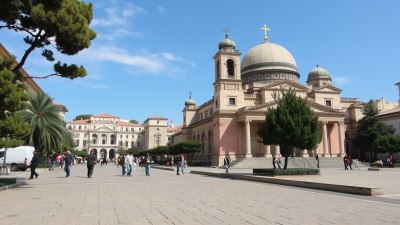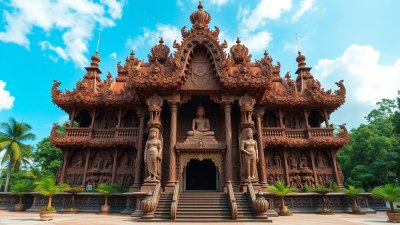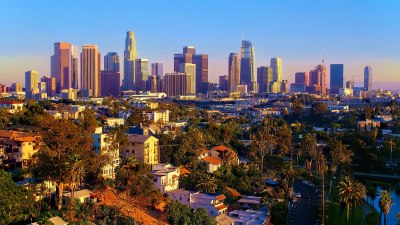Cities That Refuse to Forget
Explore cities that embrace their history and memories, shaping their identities and culture in profound ways.

Image created with Flux Schnell
In a world that constantly evolves, some cities stand as testament to the past, imbued with rich histories that are etched into their very fabric. These cities refuse to forget their heritage, embracing it to shape their present and inspire their future. From monumental architecture to preserved districts, the stories of these places create a narrative that remains alive for locals and visitors alike.
Cities across the globe have experienced wars, natural disasters, and social upheaval, yet they have emerged resilient, often finding strength and identity in remembrance. Culturally significant sites, historical landmarks, and museums preserve memories for generations, creating a unique blend of old and new. This article explores some of these remarkable cities that embody the spirit of remembrance and resilience.
1. Berlin, Germany
Berlin stands as a symbol of resilience and healing, having transformed from a war-torn city to a vibrant cultural hub. The remnants of the Berlin Wall serve as a powerful reminder of the city’s divided past. Today, sections of the wall are preserved, marked with art and messages of hope. The East Side Gallery, a 1.3-kilometer stretch of the wall, features stunning murals created by international artists, making it a living monument to freedom.
In addition to the wall, the Memorial to the Murdered Jews of Europe stands in a stark, contemplative manner, inviting visitors to reflect on the atrocities of the Holocaust. With its 2,711 concrete slabs, the memorial creates an emotional and immersive experience. Berlin also boasts numerous world-class museums, including the Jewish Museum and the Topography of Terror, which document the city’s tumultuous history and the sacrifices made in the name of justice.
2. Hiroshima, Japan
Hiroshima embodies the power of remembrance and reconciliation. Following the devastation of the atomic bomb in 1945, the city has rebuilt itself while ensuring that the memory of its past is never forgotten. The Hiroshima Peace Memorial Park is a serene homage to the victims of the bombing, featuring the iconic Atomic Bomb Dome, which remains as a poignant reminder of the destructive capabilities of nuclear weapons.
The Hiroshima Peace Memorial Museum tells the story of the events leading up to the bombing, its aftermath, and the ongoing pursuit of peace. The exhibits provide a historical context to the tragedy, making it a must-visit for those wanting to grasp the enduring impacts of war. Hiroshima's resilience is mirrored in its commitment to world peace, exemplified by the annual Peace Memorial Ceremony.
3. Warsaw, Poland
The capital of Poland, Warsaw, is often referred to as the “Phoenix City,” having risen from the ashes of World War II. Over 90% of the city was destroyed during the war, but the inhabitants took immense pride in their history and culture, dedicating efforts to reconstruct it authentically. The Old Town of Warsaw, a UNESCO World Heritage site, has been painstakingly restored to its pre-war glory, with cobbled streets, historic buildings, and cultural landmarks.
The Warsaw Uprising Museum commemorates the heroism of the Polish resistance during the German occupation. This interactive museum engages visitors with immersive exhibits that tell the story of the uprising and its enduring impact on the city. By remembering its past, Warsaw has cultivated a unique character that honors both its struggles and triumphs.
4. Cape Town, South Africa
Cape Town is a city where past and present coalesce, marked by its natural beauty and diverse history. While it’s known for its stunning landscapes, such as Table Mountain and the Cape of Good Hope, it also has a deeply ingrained historical narrative that shapes its identity. The District Six Museum serves as a poignant reminder of the forced removals during apartheid, telling the stories of families and communities that were displaced.
The Robben Island Museum is another critical site commemorating the resistance against apartheid, where Nelson Mandela was imprisoned for 18 years. Guided tours by former political prisoners bridge the gap between history and memory, providing an intimate understanding of the struggle for freedom. As Cape Town navigates its present challenges, the remembrance of its past remains essential in fostering unity and social cohesion.
5. Jerusalem, Israel
Jerusalem is perhaps one of the most historically and culturally significant cities in the world, revered by multiple religions. The city’s history dates back thousands of years, making it a focal point for remembrance and spiritual reflection. The Western Wall, a remnant of the Second Temple, serves as a sacred site for Jewish prayer and pilgrimage. Nearby, the Church of the Holy Sepulchre and the Al-Aqsa Mosque represent profound significance for Christianity and Islam, respectively.
The diverse narratives and histories of Jerusalem are interpreted through its myriad museums and memorials. The Yad Vashem Holocaust Memorial poignantly preserves the memory of the six million Jews who perished during the Holocaust, ensuring that their stories are never forgotten. In Jerusalem, the intertwining of faith, culture, and memory creates a unique tapestry that endures through the ages.
6. New Orleans, USA
New Orleans is a vibrant city known for its rich cultural heritage, music scene, and culinary delights. However, it is also a place that commemorates its past through remembrance and celebration. The city’s unique blend of cultures, particularly its African, French, and Spanish influences, has shaped its identity. Sites such as the historic French Quarter and St. Louis Cemetery Nos. 1 serve as living reminders of its complex history.
The New Orleans African American Museum stands as a testament to the resilience of the African American community, highlighting their contributions to the city’s culture. Annual events such as Mardi Gras not only celebrate local traditions but also reflect the city’s history and the interplay of diverse cultures. New Orleans' spirit is encapsulated in its unwavering commitment to remember the past while embracing the joy of life.
7. Istanbul, Turkey
Istanbul is a city where east meets west, and its rich history spans several empires and cultures. This transcontinental city has been both a capital of the Byzantine and Ottoman empires, leaving an indelible mark on its architecture and culture. The Hagia Sophia, originally a cathedral and later a mosque, exemplifies the city’s ability to encapsulate its diverse past while evolving for the future. Its intricate mosaics and grandeur draw millions of visitors each year.
The Topkapi Palace, once the residence of Ottoman sultans, now serves as a museum that showcases the opulence and historical significance of its past. Istanbul embraces its history through preserved neighborhoods like Sultanahmet and Balat, where historical architecture reflects the city’s multicultural roots. By honoring its heritage, Istanbul fosters a strong sense of identity that resonates throughout its vibrant streets.
8. Athens, Greece
As one of the oldest cities in the world, Athens is a cradle of civilization and cultural memory. The Acropolis, a UNESCO World Heritage site, stands as an enduring symbol of ancient Greece’s philosophical and political contributions. The Parthenon, with its imposing columns, embodies the spirit of Athenian democracy and artistic achievement. The Acropolis Museum offers a contemporary perspective on the ancient artifacts, creating a dialogue between the past and present.
Beyond the grandeur of ancient ruins, Athens has also remembered its more recent struggles, including the military dictatorship of the 1960s and 70s. Memorials dedicated to the victims of political repression serve to commemorate the struggles for democracy and human rights. The city’s commitment to remembering its past fuels its vibrant cultural scene and intellectual discourse.
9. Mexico City, Mexico
Mexico City is a vibrant metropolis that celebrates its historical roots while passionately embracing modernity. The Zócalo, the city’s main square, hosts historical sites such as the Metropolitan Cathedral and the National Palace. The Templo Mayor, a significant archaeological site of the Aztec Empire, offers insight into the pre-Hispanic era.
The Museo Nacional de Antropología houses countless artifacts, showcasing Mexico’s rich history and cultural diversity. In contrast to these ancient remnants, the city thrives with contemporary art and innovation. Events like the Day of the Dead honor deceased loved ones and reflect the city’s deep connection to memory and tradition. In Mexico City, remembrance intertwines with celebration, weaving a narrative that spans centuries.
10. Hanoi, Vietnam
Hanoi is a city that has endured centuries of upheaval and change but continues to thrive with a vibrant culture and rich history. The Ho Chi Minh Mausoleum symbolizes the Vietnamese struggle for independence and serves as a site of national remembrance. The city is filled with colonial architecture and traditional Vietnamese cultural elements that coexist harmoniously.
The Vietnam Museum of Ethnology offers insights into the diverse cultures that make up the country, preserving the unique identities of various ethnic groups. As Hanoi moves forward, it honors its past through its festivals, culinary traditions, and worship practices that continue to define the spirit of the city. Hanoi exemplifies how cities can navigate change while remaining deeply connected to their histories.
In conclusion, cities that refuse to forget their past illustrate how history shapes identity and resilience. Through preservation and commemoration, these urban landscapes remind us of the struggles and triumphs of those who came before us. By actively engaging with their histories, these cities foster a sense of belonging and continuity that transcends generations. Whether through memorials, museums, or cultural events, the narratives of remembrance play an essential role in keeping the spirit of the past alive amidst the relentless march of modernity. The stories that emerge from these cities not only connect us to our roots but also inspire future generations to build a better world rooted in understanding, compassion, and remembrance.











